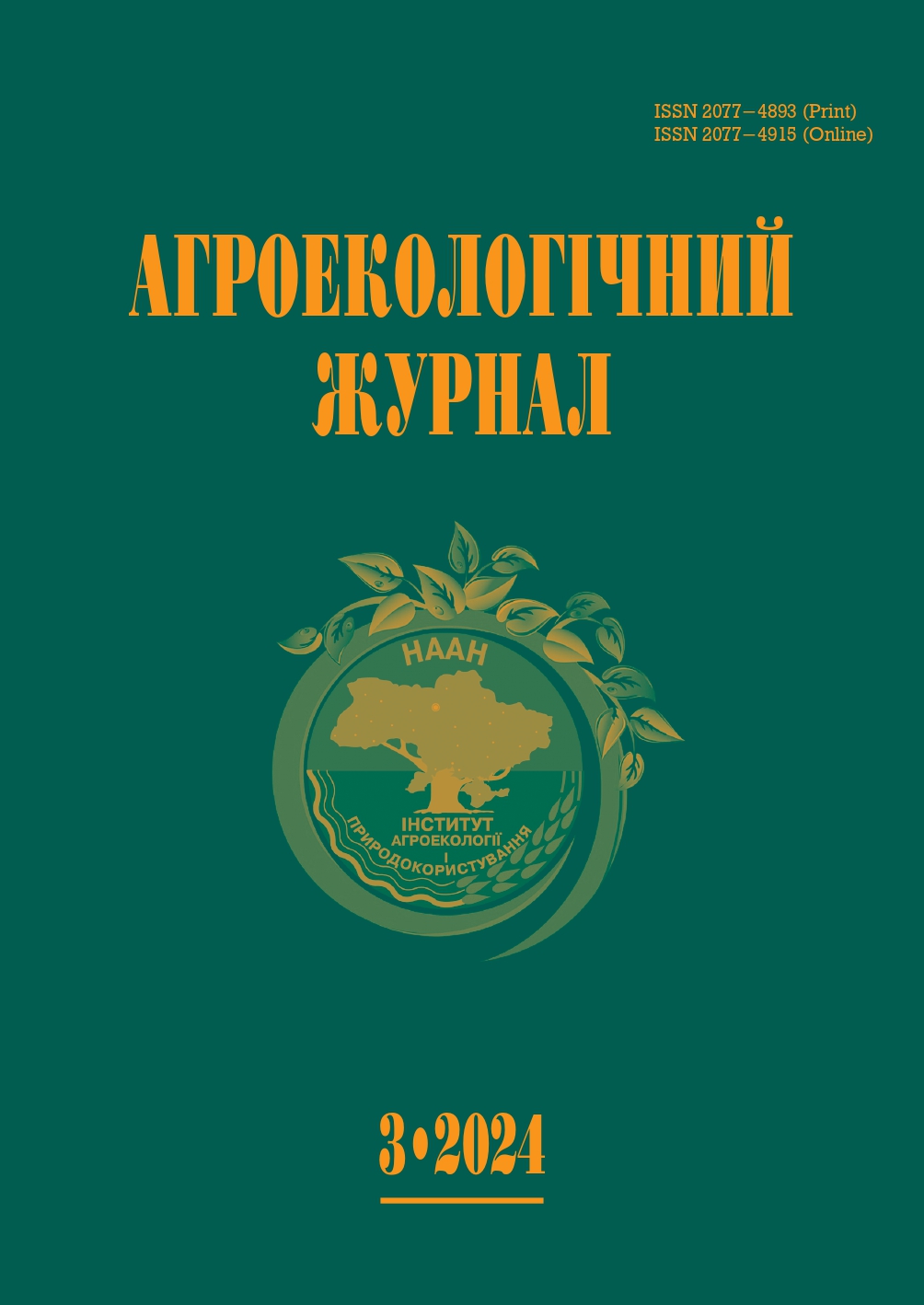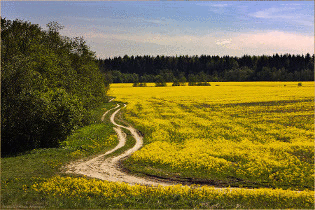Ефективність мікоризоутворювальних грибів у технології вирощування соняшника (Helianthus L.)
DOI:
https://doi.org/10.33730/2077-4893.3.2024.311189Ключові слова:
агроекосистема, мікоризація, гетеротрофне живлення рослин, мікробіом, мікроорганізми, агротехнології, олійні культуриАнотація
Сучасні екологічні методи ведення агровиробництва потребують зменшення використання хімічних добрив і пестицидів та заміну їх на альтернативні безпечні й водночас високоефективні засоби. Це особливо актуально для технологій вирощування основних експортоорієнтованих культур, серед яких важливе місце в Україні і світі посідає соняшник (Helianthus L.). Перспективним напрямом є застосування біологічних препаратів на основі мікоризоутворювальних грибів, які покращують ріст і розвиток рослин через ефективний симбіоз із кореневою системою. З цією метою досліджували вплив біологічного препарату на основі мікоризоутворювальних грибів Міковітал у технології вирощування соняшника на продуктивність та мікобіом ґрунту. Встановлено, що використання препарату Міковітал спричинило збільшення врожайності соняшника на 25,5% та отримання приросту врожаю насіння 0,59 т/га за поліпшених показників якості насіння (маси 1000 насінин та олійності). До того ж препарат сприяв підвищенню площі активних коренів на всіх етапах розвитку рослин, зокрема, у фазі бутонізації ВВСН 61–69 площа активних коренів зросла на 5,2 см2, у фазі цвітіння (ВВСН 71–79) — на 4,9 см2, що забезпечило рослинам ефективніше поглинання води та поживних речовин. Виявлено, що збільшення листкової поверхні (у фазі появи 2 трійчастого листка ВВСН 10–19 на 0,5 дм2, у фазі бутонізації ВВСН 61–69 — на 1,5 дм2, у фазі цвітіння ВВСН 71–79 — на 2,1 дм2) сприяло підвищенню фотосинтетичної активності та продуктивності рослин. Застосування препарату позитивно вплинуло на ґрунтовий мікобіом, зокрема відмічено посилення чисельності корисних мікроорганізмів у ґрунті, як-от амоніфікувальні бактерії та стрептоміцети, а також появі нових видів мікроміцетів, таких як Trichoderma і Glomus. Зазначене свідчить про розширення біорізноманіття ґрунту агроценозу соняшника, а також домінування процесів деструкції над синтезом органічної речовини ґрунту. Загалом, використання біологічного препарату Міковітал на основі мікоризоутворювальних грибів виявилося ефективним засобом для поліпшення росту, розвитку та врожайності соняшника, забезпечення стабільності рослин у стресових умовах, а також оптимізації структури ґрунтового мікробіому
Посилання
Demianiuk, O.S., Matusevych, H.D., Mazur, S.O. et al. (2023). Pshenytsia, kukurudza ta soniashnyk — osnovni kultury ukrainskoho eksportu [Wheat, corn, and sunflower are the main crops of Ukrainian exports]. Zemlerobstvo ta roslynnytstvo: teoriia i praktyka — Agriculture and Crop Production: Theory and Practice, 4 (10), 41–50. DOI: https://doi.org/10.54651/agri.2023.04.05 [in Ukrainian].
Wahab, A., Muhammad, M., Munir, A. et al. (2023). Role of arbuscular mycorrhizal fungi in regulating growth, enhancing productivity, and potentially influencing ecosystems under abiotic and biotic stresses. Plants (Basel), 12 (17), 3102. DOI: https://doi.org/10.3390/plants12173102 [in English].
Montanarella, L., Pennock, D.J., McKenzie, N. et al. (2016). World’s soils are under threat. Soil, 2, 79–82. DOI: https://doi.org/10.5194/soil-2-79-2016 [in English].
Dewitte, O., Jones, A., Spaargaren, O. et al. (2013). Harmonisation of the soil map of Africa at the continental scale. Geoderma, 211, 138–153. DOI: https://doi.org/10.1016/j.geoderma.2013.07.007 [in English].
Fall, A.F., Nakabonge, G., Ssekandi, J. et al. (2022). Roles of arbuscular mycorrhizal fungi on soil fertility: contribution in the improvement of physical, chemical, and biological properties of the soil. Front. Fungal Biol, 3, 723892. DOI: https://doi.org/10.3389/ffunb.2022.723892 [in English].
Dal Cortivo, C., Ferrari, M., Visioli, G. et al. (2020). Effects of seed-applied biofertilizers on rhizosphere biodiversity and growth of common wheat (Triticum aestivum L.) in the field. Front. Plant Sci., 11, 72. DOI: https://doi.org/10.3389/fpls.2020.00072 [in English].
Anderson, R., Keshwani, D., Guru, A. et al. (2018). An integrated modeling framework for crop and biofuel systems using the DSSAT and GREET models. Environ. Model. Softw, 108, 40–50. DOI: https://doi.org/10.1016/j.envsoft.2018.07.004 [in English].
Oliferchuk, V.P. & Fedorovych, D.V. (2021). Vplyv mikoryznoho hryba Tuber melanosporum na bioriznomanittia mikromitsetiv ryzosfery ta rist i produktyvnist funduka [The Influence of the Mycorrhizal Fungus Tuber melanosporum on the Biodiversity of Rhizosphere Micromycetes and the Growth and Productivity of Hazelnut]. Naukovyi visnyk NLTU Ukrainy ‒ Scientific Bulletin of the National Forestry University of Ukraine, 31 (2), 28‒34. DOI: https://doi.org/10.36930/40310204 [in Ukrainian].
Bonfante, P., Desirò, A. & Lugtenberg, B. (Ed.). (2015). Arbuscular mycorrhizas: The lives of beneficial fungi and their plant hosts. Principles of Plant-Microbe Interactions. (рр. 235–245). DOI: https://doi.org/10.1007/978-3-319-08575-3_25 [in English].
Kaiser, C., Kilburn, M.R., Clode, P.L. et al. (2015). Exploring the transfer of recent plant photosynthates to soil microbes: mycorrhizal pathway vs. direct root exudation. New Phytol, 205, 1537–1551. DOI: https://doi.org/10.1111/nph.13138 [in English].
Luginbuehl, L.H., Menard, G.N., Kurup, S. et al. (2017). Fatty acids in arbuscular mycorrhizal fungi are synthesized by the host plant. Science, 356, 1175–1178. DOI: https://doi.org/10.1126/science.aan0081 [in English].
Keymer, A., Pimprikar, P., Wewer, V. et al. (2017). Lipid transfer from plants to arbuscular mycorrhiza fungi. ELife, 6, 29107. DOI: https://doi.org/10.7554/eLife.29107.002 [in English].
Jamiołkowska, A., Ksiezniak, A., Gałazka, A. et al. (2018). Impact of abiotic factors on development of the community of arbuscular mycorrhizal fungi in the soil: a review. Int. Agrophys, 32, 133. DOI: https://doi.org/10.1515/intag-2016-0090 [in English].
Parihar, M., Rakshit, A., Meena, V.S. et al. (2020). The potential of arbuscular mycorrhizal fungi in C cycling: a review. Arch. Microbiol, 202, 581–1596. DOI: https://doi.org/10.1007/s00203-020-01915-x [in English].
Wang, Z., Li, Y., Li, T., Zhao, D. & Liao, Y. (2020). Conservation tillage decreases selection pressure on community assembly in the rhizosphere of arbuscular mycorrhizal fungi. Sci. Tot. Environ, 710, 136326. DOI: https://doi.org/10.1016/j.scitotenv.2019.136326 [in English].
El-maghraby, F.M., Shaker, E.M., Elbagory, M., Omara, A.E.-D. & Khalifa, T.H. (2024). The synergistic impact of arbuscular mycorrhizal fungi and compost tea to enhance bacterial community and improve crop productivity under saline-sodic condition. Plants, 13, 629. DOI: https://doi.org/10.3390/plants13050629 [in English].
Augé, R. (2021). Water relations, drought and vesicular-arbuscular mycorrhizal symbiosis. Mycorrhiza, 11, 3–42. DOI: https://doi.org/10.1007/s005720100097 [in English].
Sylvia, D.M., Fuhrmann, J.J., Hartel, P.G. & Zuberer, D.A. (2005). Principles and Applications of Soil Microbiology. Pearson Education [in English].
Parniske, M. (2008). Arbuscular mycorrhiza: the mother of plant root endosymbioses. Nature Reviews Microbiology, 6 (10), 763–775. DOI: https://doi.org/10.1038/nrmicro1987 [in English].
Smith, F.A. & Smith, S.E. (2011). How useful is the mutualism-parasitism continuum of arbuscular mycorrhizal functioning? Plant and Soil, 363 (1-2). DOI: https://doi.org/10.1007/s11104-012-1583-y [in English].
Jeffries, P., Gianinazzi, S., Perotto, S., Turnau, K. & Barea, J.M. (2003). The contribution of arbuscular mycorrhizal fungi in sustainable maintenance of plant health and soil fertility. Biology and Fertility of Soils, 37, 1–16. DOI: https://doi.org/10.1007/s00374-002-0546-5 [in English].
Smith, S.E. & Read, D.J. (2008). Mycorrhizal Symbiosis. Academic Press. DOI: https://doi.org/10.1016/B978-0-12-370526-6.X5001-6 [in English].
Mahdi, S., Hassan, G., Samoon, S. et al. (2010). Biofertilizers in organic agriculture. Journal of Phytology, 2, 42–54 [in English].
Andriiuk, K.I, Iutynska, H.O. & Antypchuk, A.F. (2001). Funktsionuvannia mikrobnykh uhrupovan v umovakh antropohennoho navantazhennia [Functioning of Microbial Communities under Anthropogenic Load]. Kyiv [in Ukrainian].
Voitsekhivska, O.V., Kapustian, A.V., Kosyk, O.I. & Parshykovа, T.V. (Ed.). Fiziolohiia roslyn [Plant Physiology]. Lutsk: Teren [in Ukrainian].
Symochko, L.Yu. & Demianiuk, O.S. (2018). Mikrobiom gruntu kulturnykh roslyn za riznykh ahrotekhnolohii [Soil Microbiome of Cultivated Plants under Different Agrotechnologies]. Ahroekolohichnyi zhurnal ‒ Agroecological Journal, 2, 87–93. DOI: https://doi.org/10.33730/2077-4893.2.2018.157862 [in Ukrainian].
Demyanyuk, O., Symochko, L. & Shatsman, D. (2020). Structure and dynamics of soil microbial communities of natural and transformed ecosystems. Environmental Research, Engineering and Management (EREM), 76 (4), 97–105. DOI: https://doi.org/10.5755/j01.erem.76.4.23508 [in English].
##submission.downloads##
Опубліковано
Номер
Розділ
Ліцензія
Авторське право і ліцензування
Умови ліцензії: автори зберігають авторські права і надають журналу право першої публікації з роботою, одночасно ліцензованої за ліцензією Creative Commons Attribution License International CC-BY, яка дозволяє іншим ділитися роботою з визнанням авторства роботи і початкової публікації в цьому журналі.
Якщо стаття прийнята до публікації в «Агроекологічний журнал», автор повинен підписати угоду про передачу авторських прав. Угода відправляється на поштову (оригінал) або адресу електронної пошти (відсканована копія) редакції журналу.
Цією угодою автор підтверджує, що представлені матеріали:
- не порушують авторських прав інших осіб або організацій;
- раніше не публікувались в інших видавництвах і не були представлені для публікації в інших виданнях.
Автор передає редакції «Агроекологічного журналу» права на:
- публікації статті українською (англійською) мовою і поширення її друкованої копії;
- поширення електронної копії статті, а також електронної копії перекладу статті на англійську мову (для статей українською мовою), будь-якими електронними засобами (розміщення на офіційному сайті журналу, електронних баз даних, сховищ тощо) друкована копія перекладу.
Автор залишає за собою право без згоди редакції та засновників:
- Використовувати матеріали статті повністю або частково в ознайомлювальних цілях.
- Використовувати матеріали статті повністю або частково для написання власних дисертацій.
- Використовувати матеріали статті для підготовки тез доповідей, доповідей конференцій, а також усних доповідей.
- Додати електронні копії статті (включаючи остаточну електронну копію, завантажену з офіційного сайту журналу) за адресою:
- персональні веб-ресурси всіх авторів (веб-сайти, веб-сторінки, блоги тощо);
- веб-ресурси установ, в яких працюють автори;
- некомерційні веб-ресурси відкритого доступу (наприклад, arXiv.org).
У всіх випадках наявність бібліографічного посилання на статтю або гіперпосилання на її електронну копію на офіційному сайті журналу є обов'язковим.



